Research on Stability Control of Distributed Drive Vehicle with Four-Wheel Steering
Abstract
:1. Introduction
- A control method for the joint control of wheel torque and angle is proposed to improve vehicle stability based on the distributed drive vehicle with drive-by-wire four-wheel steering.
- The mathematical modeling of a four-wheel steering vehicle is established, and proportional feedforward and PID (proportional-integral-derivative control) feedback control is carried out on the yaw rate with the side slip angle of the center of mass as the control objective. Additionally, torque distribution is achieved through the fuzzy control method.
- The angle and torque control strategy is simulated through Matlab/Simulink (R2019b) and Carsim (2020.0) co-simulation analysis to verify its effectiveness.
2. Mathematical Model Construction of Vehicle
2.1. 4WS (Four-Wheel Steering) Vehicle Mathematical Model
2.2. Ideal Reference Model
2.3. Drive Motor Model
3. Design of Control Strategy
3.1. The 4WS (Four-Wheel Steering) Vehicle Steering Control Strategy
3.1.1. Feedforward Controller
3.1.2. Proportional-Integral-Derivative Feedback Controller
3.2. Torque Distribution Control Strategy
3.2.1. Upper-level Controller Design
3.2.2. Lower-Level Controller Design
4. Simulation Result Analysis
4.1. DLC Maneuver on High Adhesion Road
4.2. On-Center Steer Maneuver on Low-Adhesion Road
5. Conclusions
Author Contributions
Funding
Data Availability Statement
Conflicts of Interest
References
- Serralvo Neto, R.; Palermo, J.B.; Giacomini, R.; Rodrigues, M.; Delatore, F.; Rossi, G.B.; Galeti, M.; Bühler, R.T. Performance Prediction of a 4WD High-Performance Electric Vehicle Using a Model-Based Torque-Vectoring Approach. World Electr. Veh. J. 2023, 14, 183. [Google Scholar] [CrossRef]
- Zhu, S.; Wei, B.; Ping, C.; Shi, M.; Wang, C.; Chen, H.; Han, M. Research on Stability Control Algorithm of Distributed Drive Bus under High-Speed Conditions. World Electr. Veh. J. 2023, 14, 343. [Google Scholar] [CrossRef]
- Zhang, C.; Liu, H.; Dang, M. Robust Shared Control for Four-Wheel Steering Considering Driving Comfort and Vehicle Stability. World Electr. Veh. J. 2023, 14, 283. [Google Scholar] [CrossRef]
- Tahouni, A.; Mirzaei, M.; Najjari, B. Novel Constrained Nonlinear Control of Vehicle Dynamics Using Integrated Active Torque Vectoring and Electronic Stability Control. IEEE Trans. Veh. Technol. 2019, 68, 9564–9572. [Google Scholar] [CrossRef]
- Zhang, L. Research on State Estimation and Torque Vectoring Control of Distributed Drive Electric Vehicles. Ph.D. Thesis, Jilin University, Changchun, China, 2019. [Google Scholar]
- Xing, B. Research on Integrated Control of Four-Wheel Steering and Distributed Drive. Master’s Thesis, Jilin University, Changchun, China, 2023. [Google Scholar]
- Hu, J.; Hu, Z.; Fu, C.; Nan, F. Integrated control of AFS and DYC for in-wheel-motor electric vehicles based on operation region division. Int. J. Veh. Des. 2019, 79, 221–247. [Google Scholar] [CrossRef]
- Fu, C.; Hoseinnezhad, R.; Bab-Hadiashar, A.; Jazar, R.N. Direct yaw moment control for electric and hybrid vehicles with independent motors. Int. J. Veh. Des. 2015, 69, 1–24. [Google Scholar] [CrossRef]
- Farroni, F.; Russo, M.; Russo, R. A combined use of phase plane and handing diagram method to study the influence of tyre and vehicle characteristics on stability. Veh. Syst. Dyn. 2013, 51, 1265–1285. [Google Scholar] [CrossRef]
- Zhao, F.; An, J.; Chen, Q.; Li, Y. Integrated Path Following and Lateral Stability Control of Distributed Drive Autonomous Unmanned Vehicle. World Electr. Veh. J. 2024, 15, 122. [Google Scholar] [CrossRef]
- Ardashir, M.; Hamid, T. A novel adaptive control approach for path tracking control of autonomous vehicles subject to uncertain dynamics. Proc. Inst. Mech. Eng. Part D J. Automob. Eng. 2020, 234, 2115–2126. [Google Scholar]
- Guo, J.; Luo, Y.; Li, K. An adaptive hierarchical trajectory following control approach of autonomous four-wheel independent drive electric vehicles. IEEE Trans. Intell. Transp. Syst. 2017, 19, 2482–2492. [Google Scholar] [CrossRef]
- Khelladi, F.; Orjuela, R.; Basset, M. Direct yaw control based on a phase plan decomposition for enhanced vehicle stability. IFAC Pap. 2019, 52, 7–12. [Google Scholar] [CrossRef]
- Dai, C.; Zong, C.; Zhang, D.; Zheng, H.; Kaku, C.; Wang, D.; Zhao, K. Personalized Path-Tracking Approach Based on Reference Vector Field for Four-Wheel Driving and Steering Wire-Controlled Chassis. World Electr. Veh. J. 2024, 15, 198. [Google Scholar] [CrossRef]
- Ahmadian, N.; Khosravi, A.; Sarhadi, P. Driver assistant yaw stability control via integration of AFS and DYC. Veh. Syst. Dyn. Int. J. Veh. Mech. Mobil. 2022, 60, 1742–1762. [Google Scholar] [CrossRef]
- Elhefnawy, A.; Sharaf, A.; Ragheb, H.; Hegazy, S. Design of an Integrated Yaw-Roll Moment and Active Front Steering Controller using Fuzzy Logic Control. SAE Int. J. Veh. Dyn. Stab. NVH 2017, 1, 270–282. [Google Scholar] [CrossRef]
- Cao, X.; Xu, T.; Tian, Y.; Ji, X. Gain-scheduling LPV synthesis H∞ robust lateral motion control for path following of autonomous vehicle via coordination of steering and braking. Veh. Syst. Dyn. 2023, 61, 968–991. [Google Scholar] [CrossRef]
- Zhou, B.; Liu, Y.Y.; Wu, X.J. Integrated control of active front steering and direct yaw moment. J. Zhejiang Univ. (Eng. Sci.) 2022, 56, 2330–2339. [Google Scholar] [CrossRef]
- Wang, N.; Luo, Z.; Wang, Y.; Yang, B. Coordination control of differential drive assist steering and vehicle stability control for four-wheel-independent-drive EV. IEEE Trans. Veh. Technol. 2018, 67, 11453–11467. [Google Scholar] [CrossRef]
- Yang, F.G. Research on Steering Stability Control of Four-Wheel Independent Four-Wheel Drive Vehicle. Master’s Thesis, Wuhan University of Technology, Wuhan, China, 2023. [Google Scholar]
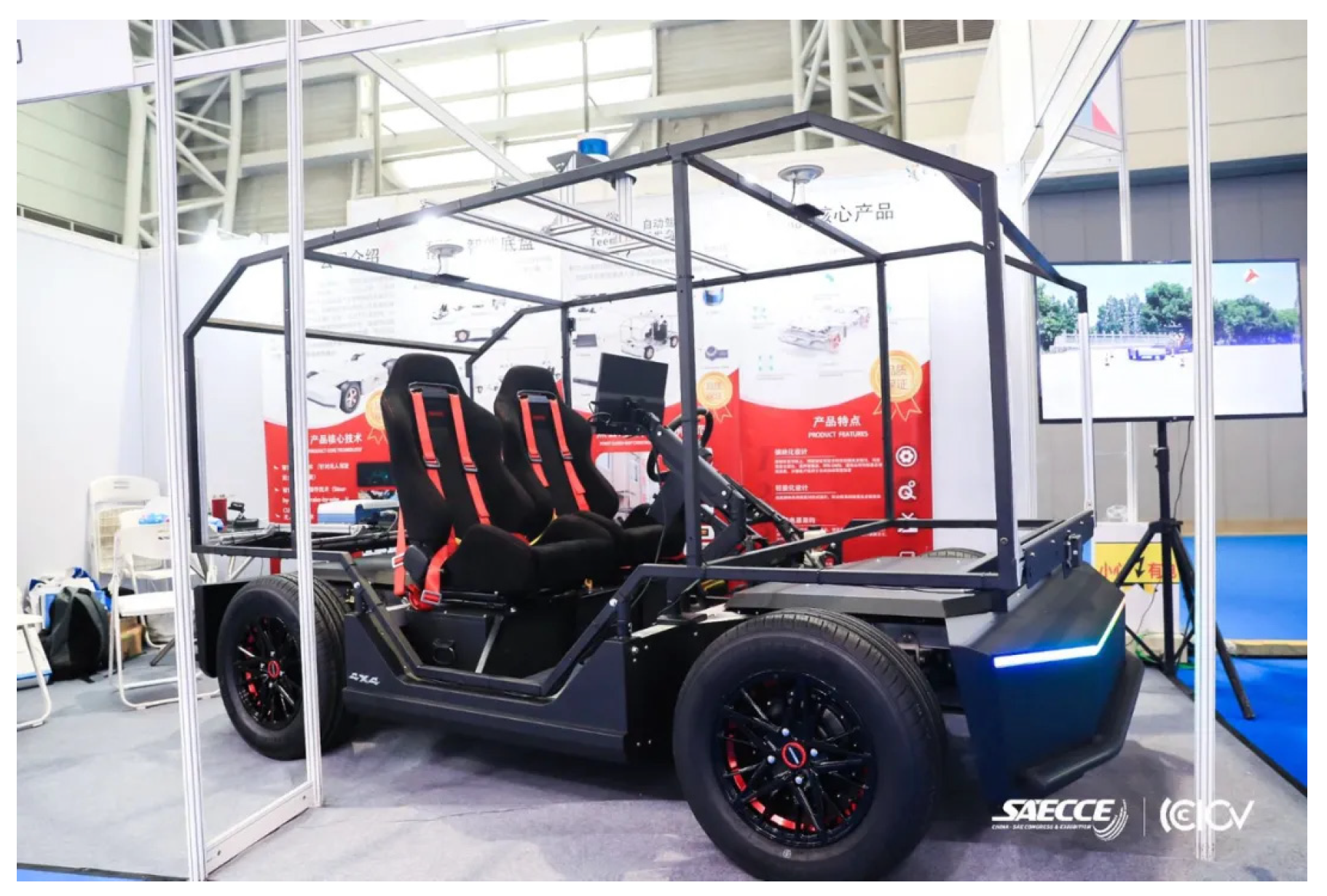
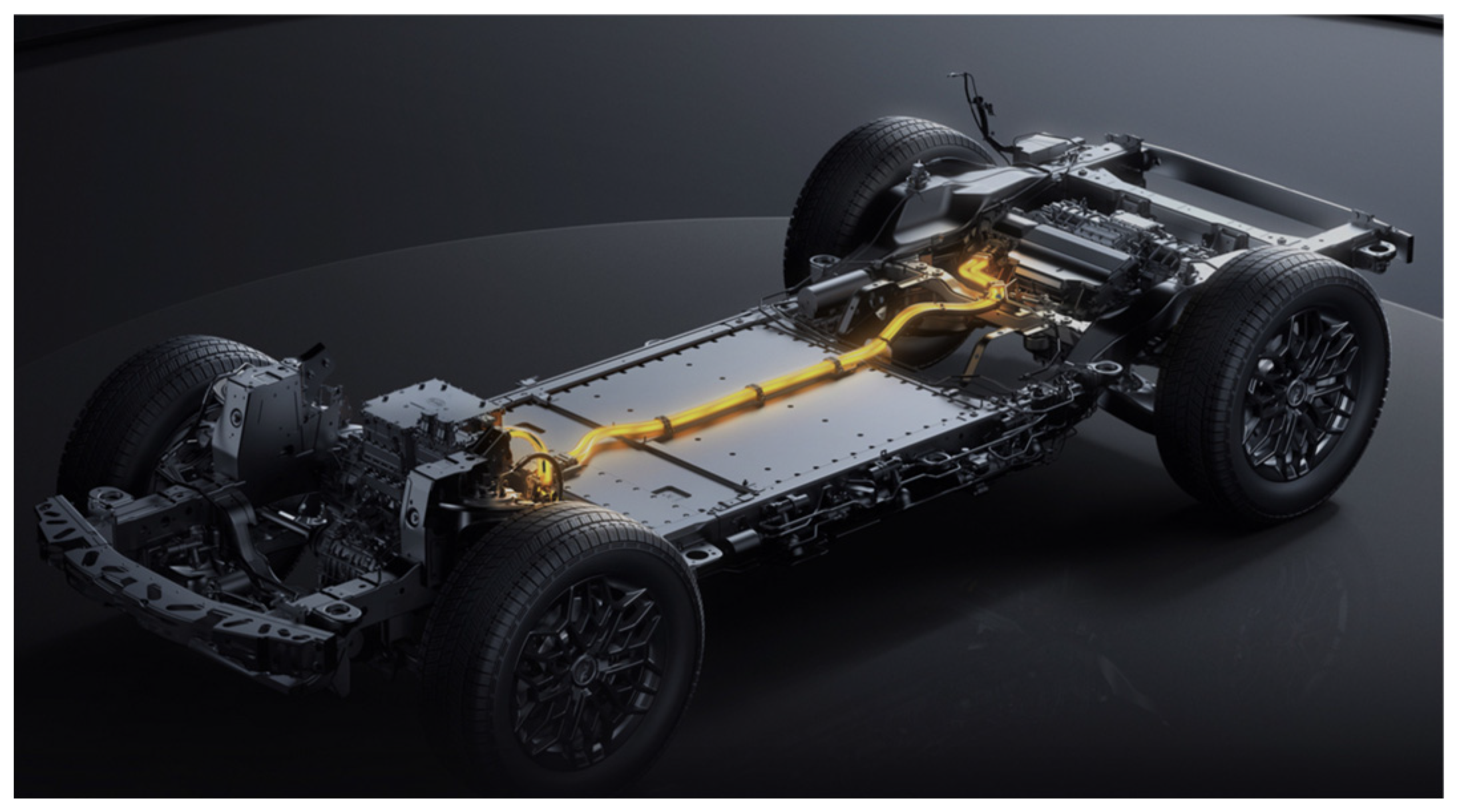
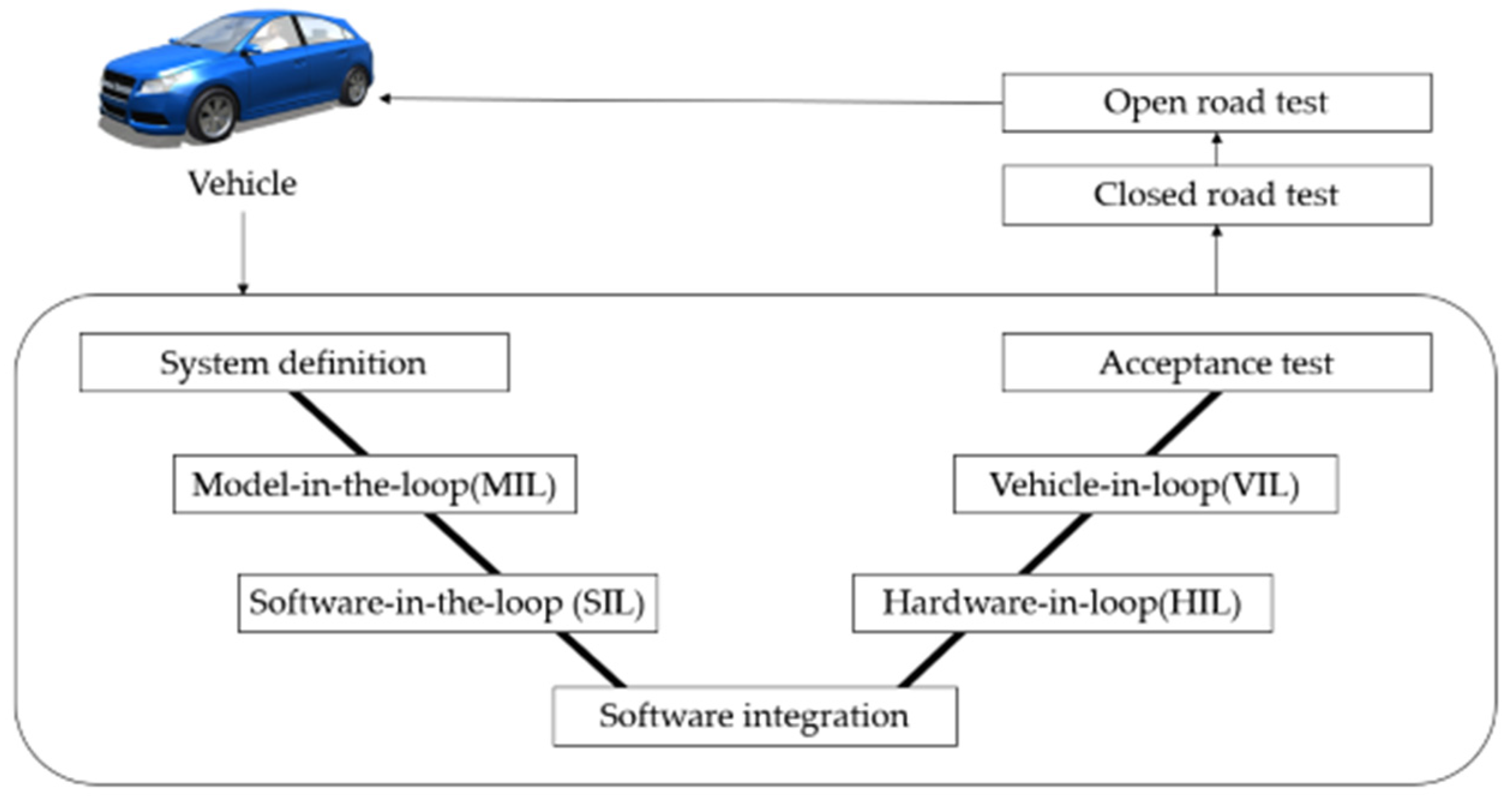
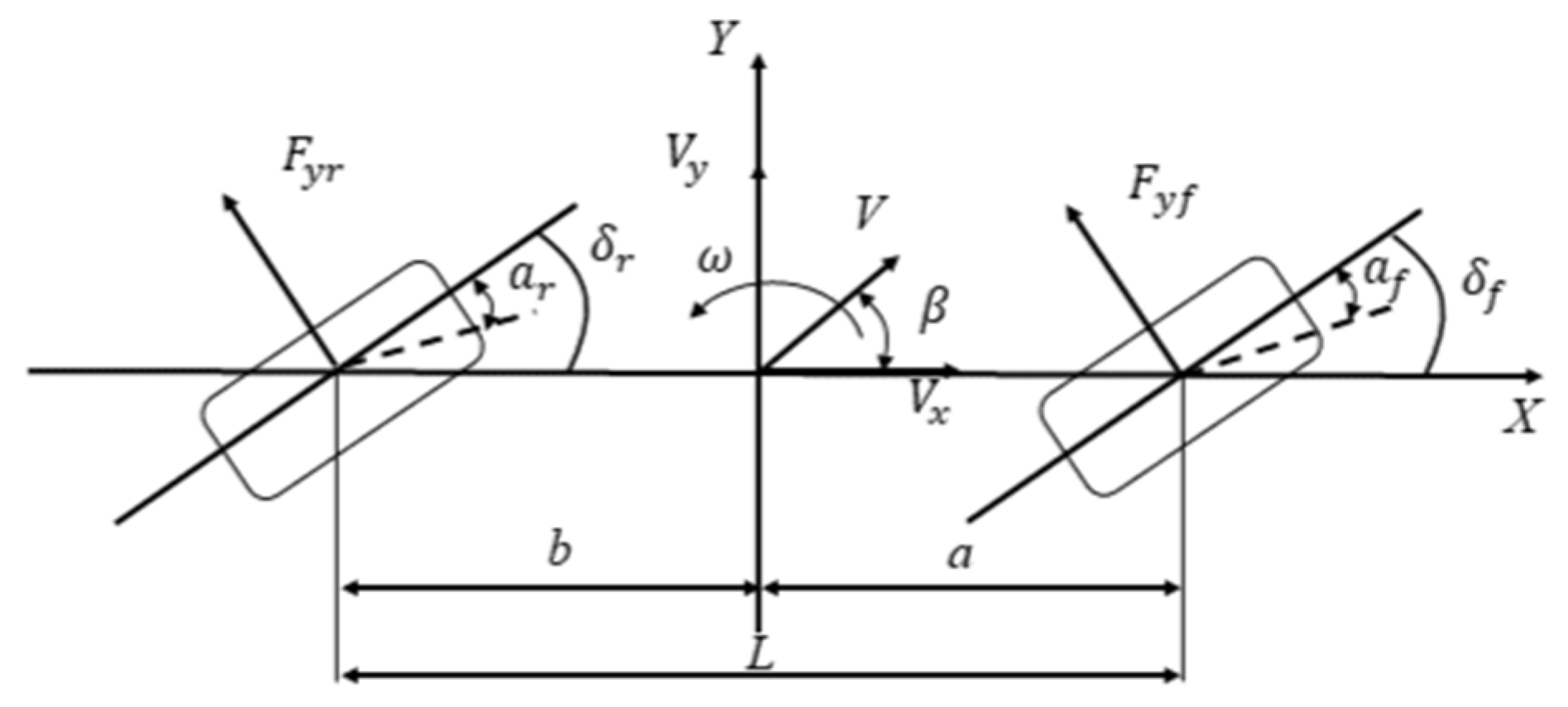

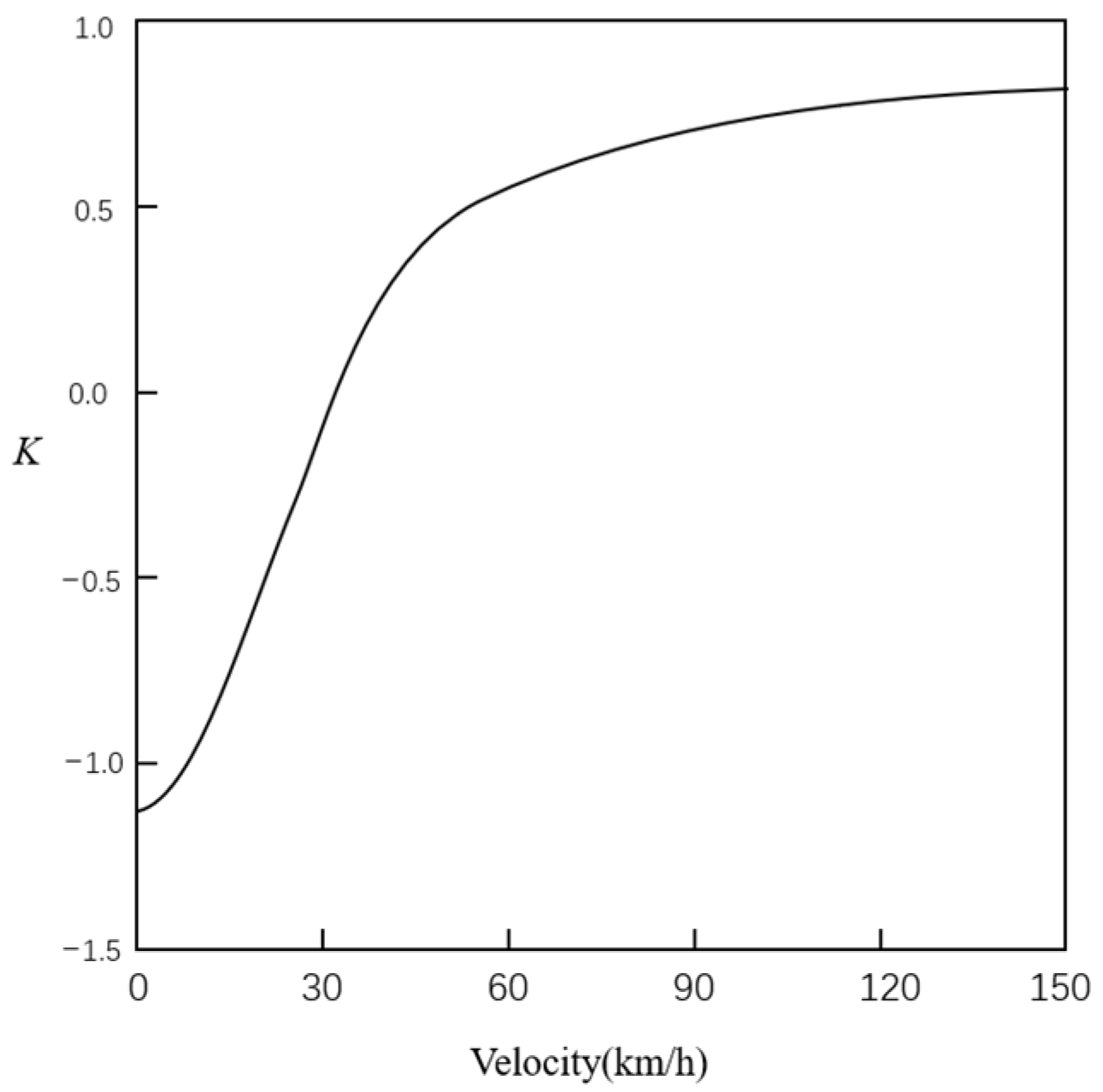

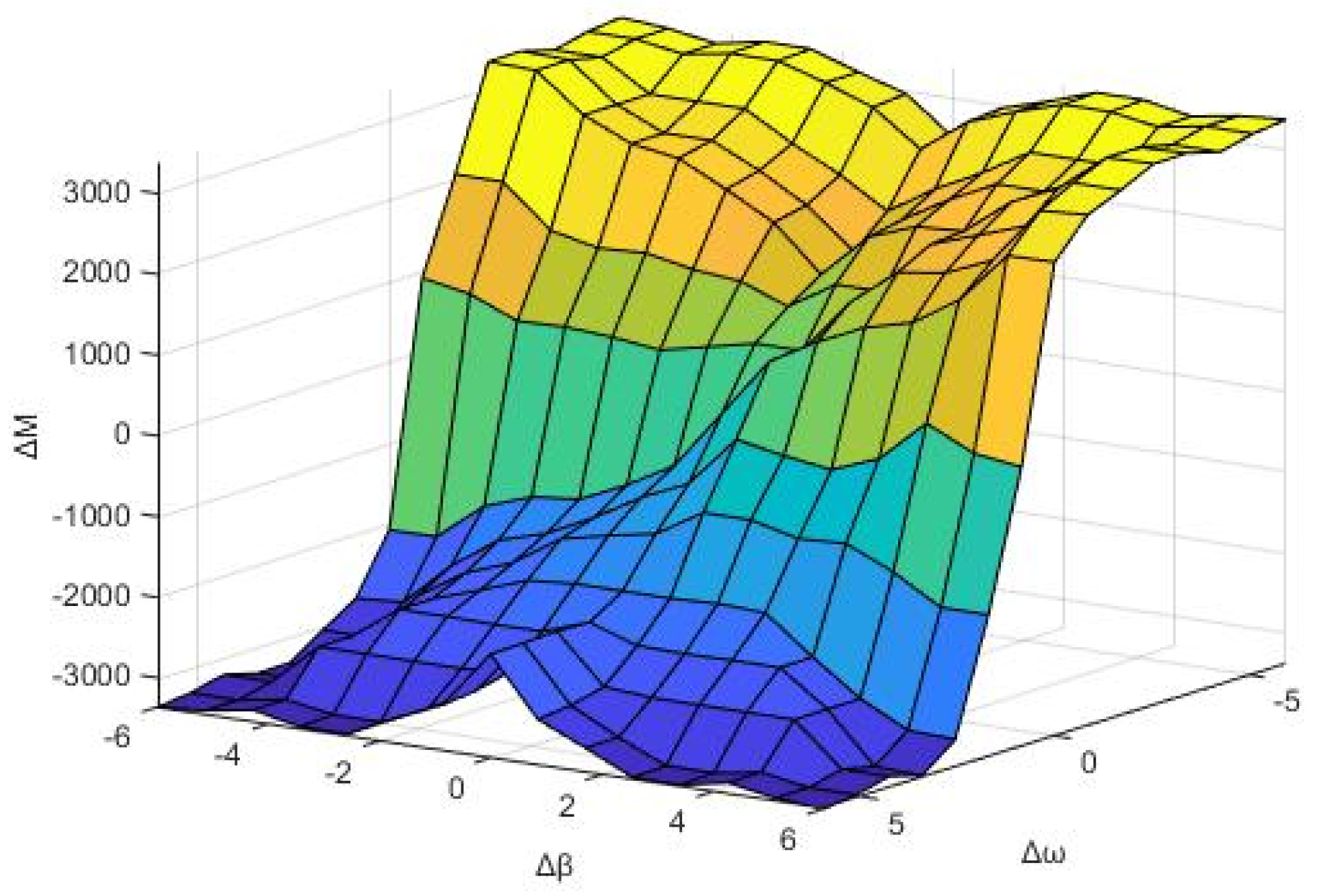
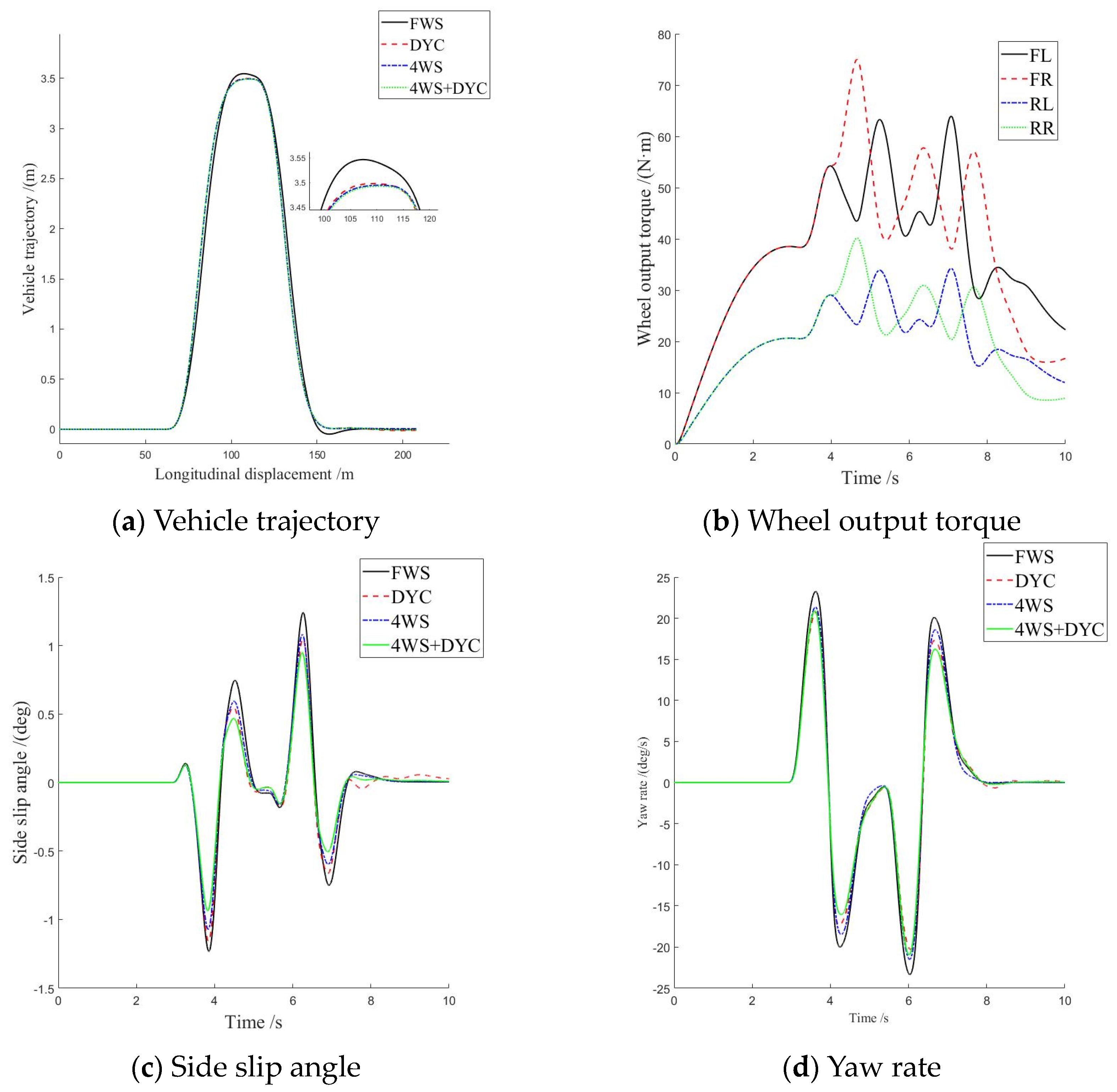
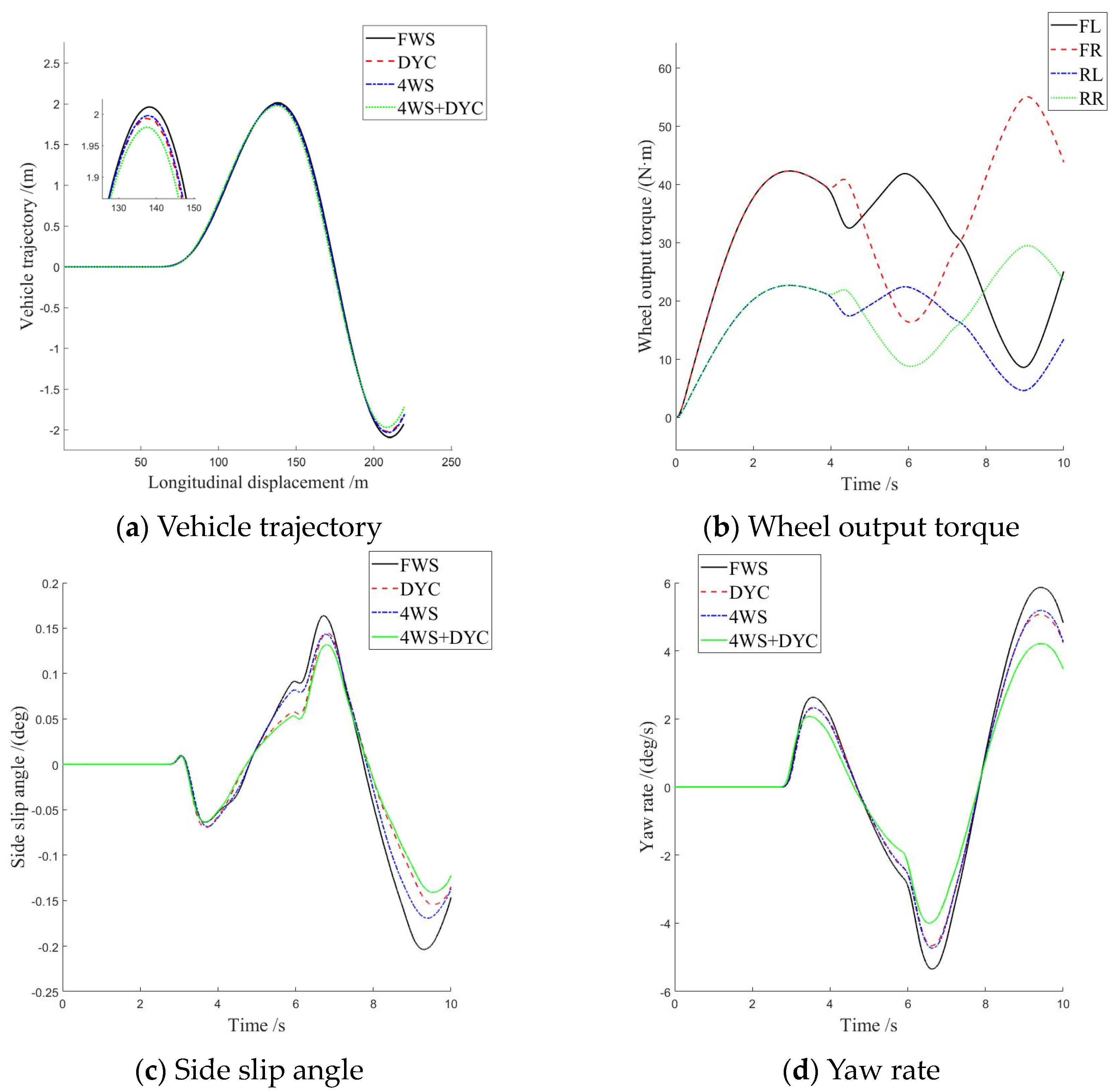
| NB | NM | NS | ZO | PS | PM | PB | ||
|---|---|---|---|---|---|---|---|---|
| NB | PB | PB | PB | NM | BM | NB | NB | |
| PB | PB | PM | PM | NS | NS | NM | NB | |
| NS | PB | PB | PM | NS | NS | NM | NB | |
| ZO | PM | PS | PS | ZO | NM | ZO | NM | |
| PS | PS | PM | PS | PB | NM | PM | NM | |
| PM | PB | PM | PM | PS | NM | PM | NB | |
| PB | PB | PB | PB | PM | NM | NB | NB | |
| Parameter | Value |
|---|---|
| Vehicle mass (kg) | 1412 |
| Wheelbase (m) | 2.91 |
| Vehicle centroid height (m) | 0.540 |
| Moment of inertia of Z axis (kg m2) | 1536.7 |
| Distance from front axle to center of mass (m) | 1.015 |
| Distance from rear axle to center of mass (m) | 1.895 |
| Rolling radius of the tire (m) | 0.4016 |
| Distance between left and right wheel tires (m) | 1.675 |
| Roll stiffness of front axle tires (N/rad) | 107,610 |
| Roll stiffness of rear axle tires (N/rad) | 74,520 |
Disclaimer/Publisher’s Note: The statements, opinions and data contained in all publications are solely those of the individual author(s) and contributor(s) and not of MDPI and/or the editor(s). MDPI and/or the editor(s) disclaim responsibility for any injury to people or property resulting from any ideas, methods, instructions or products referred to in the content. |
© 2024 by the authors. Licensee MDPI, Basel, Switzerland. This article is an open access article distributed under the terms and conditions of the Creative Commons Attribution (CC BY) license (https://creativecommons.org/licenses/by/4.0/).
Share and Cite
Zhang, J.; Liu, C.; Zhao, J.; Liu, H. Research on Stability Control of Distributed Drive Vehicle with Four-Wheel Steering. World Electr. Veh. J. 2024, 15, 228. https://doi.org/10.3390/wevj15060228
Zhang J, Liu C, Zhao J, Liu H. Research on Stability Control of Distributed Drive Vehicle with Four-Wheel Steering. World Electric Vehicle Journal. 2024; 15(6):228. https://doi.org/10.3390/wevj15060228
Chicago/Turabian StyleZhang, Jiahao, Chengye Liu, Jingbo Zhao, and Haimei Liu. 2024. "Research on Stability Control of Distributed Drive Vehicle with Four-Wheel Steering" World Electric Vehicle Journal 15, no. 6: 228. https://doi.org/10.3390/wevj15060228





